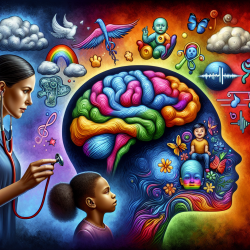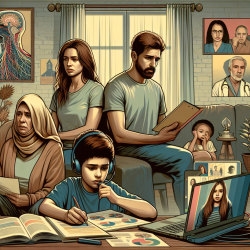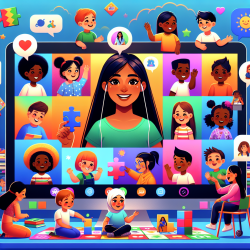Introduction
Maladaptive Daydreaming (MD) is an emerging area of interest within the field of psychology, characterized by excessive daydreaming that interferes with daily functioning. The study "Maladaptive Daydreaming in Relation to Linguistic Features and Attachment Style" sheds light on the intricate relationships between MD, linguistic features, and attachment styles. This blog aims to explore how these findings can enhance the practice of speech-language pathologists, particularly those working with children.
Understanding Maladaptive Daydreaming
MD is defined as extensive imaginary activity that replaces human engagement, affecting academic, interpersonal, or vocational functioning. The research indicates that MD is linked to psychopathological mechanisms and dysfunctional self-other relational patterns. The study involved 414 adults, using various psychological scales and linguistic analyses to identify differences between MDers and non-MDers.
Key Findings
- MDers exhibited more use of reflection and sensory-somatic words, and fewer affective words.
- MD was the strongest predictor of psychological distress as measured by the Global Severity Index (GSI).
- Attachment styles differed significantly, with MDers showing more ambivalent-fearful attachment characteristics.
- Linguistic analyses revealed MDers' narratives contained more future perspective and abstract reflection words.
Implications for Speech-Language Pathologists
Understanding the linguistic and attachment dimensions of MD can significantly enhance the practice of speech-language pathologists. Here are some ways practitioners can apply these insights:
- Language Assessment: Incorporate linguistic analysis tools to identify patterns indicative of MD, such as the frequent use of sensory-somatic words.
- Attachment-Focused Interventions: Develop strategies to address attachment issues, fostering secure attachments to improve language and social outcomes.
- Reflective Functioning Enhancement: Encourage activities that promote reflective functioning, helping children distinguish between reality and fantasy.
- Collaborative Care: Work with psychologists to address underlying psychopathological mechanisms contributing to MD.
Encouraging Further Research
The study opens avenues for further research, particularly in exploring the narratives of children with MD and their impact on language development. Speech-language pathologists are encouraged to engage in interdisciplinary research to deepen understanding and improve therapeutic outcomes.
To read the original research paper, please follow this link: Maladaptive Daydreaming in Relation to Linguistic Features and Attachment Style.










